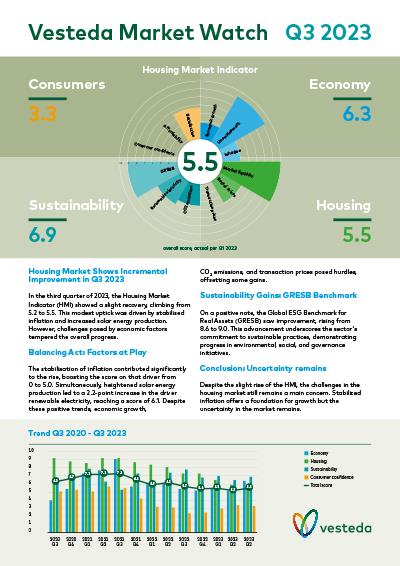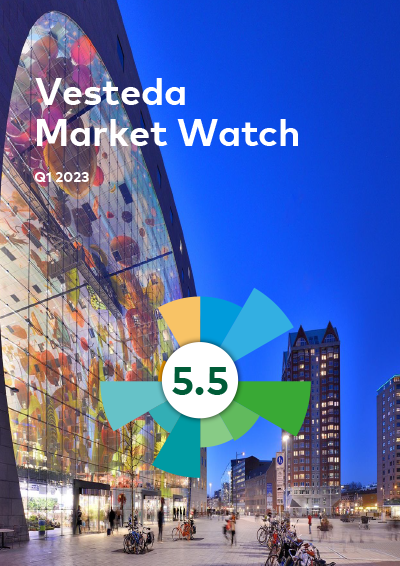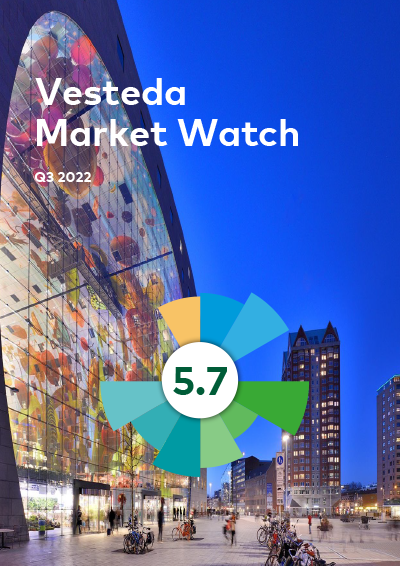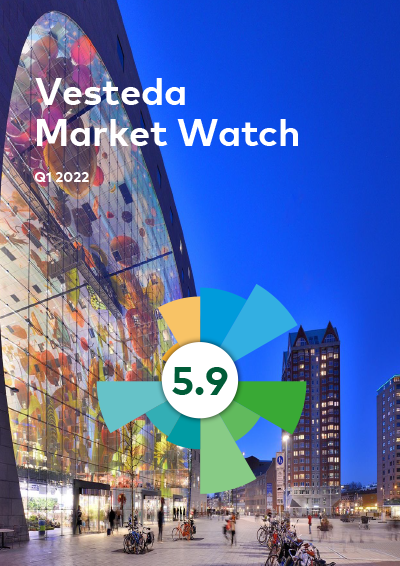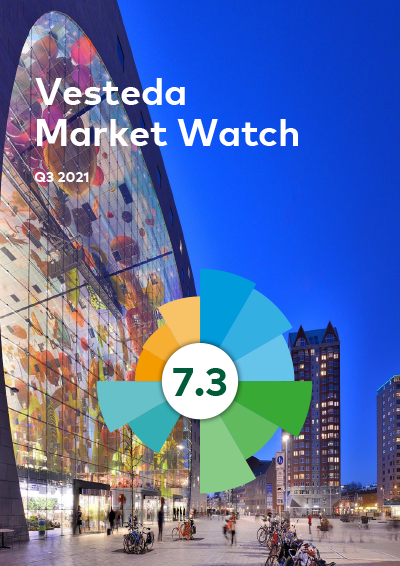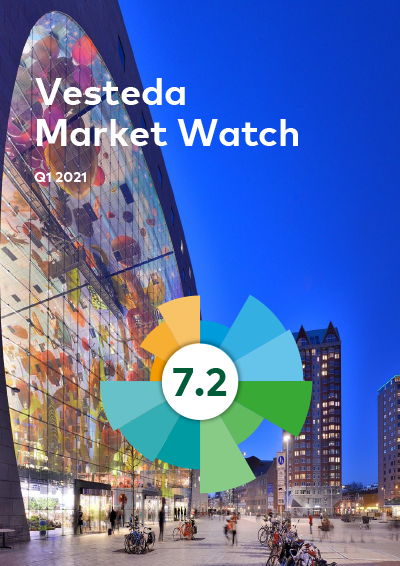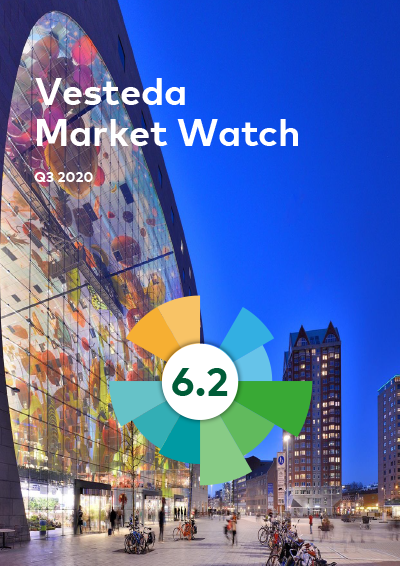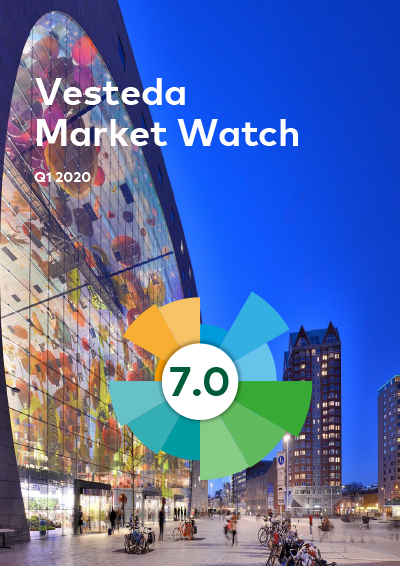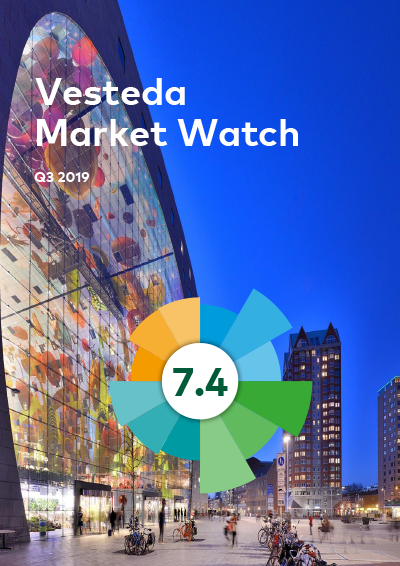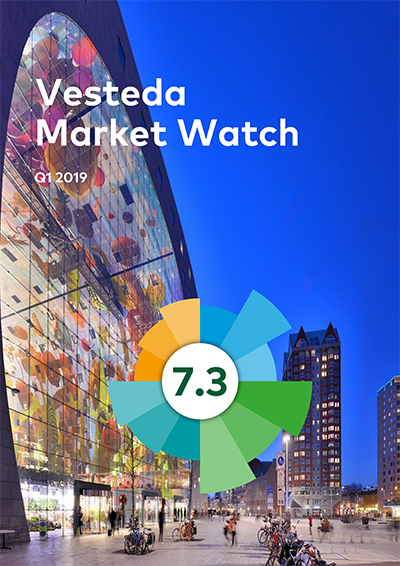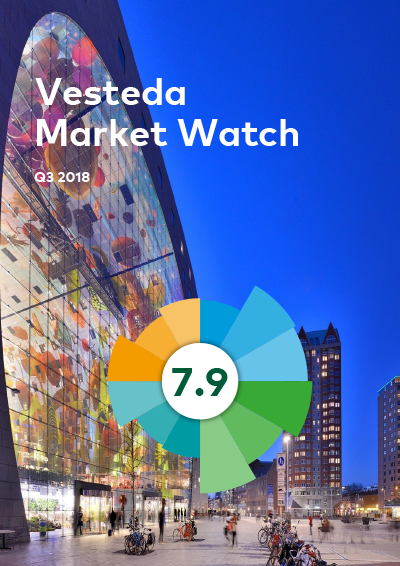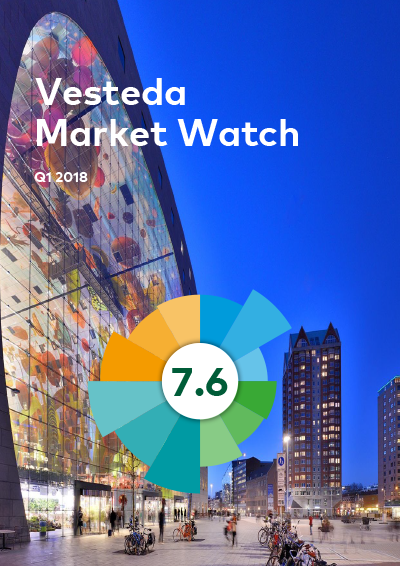-
Economy
-
4.7
Economic growth
-
9.1
Unemployment
-
5.0
Inflation
-
-
Housing
-
9.8
Market liquidity
-
7.3
Rental prices
-
2.8
Transaction prices
-
-
Consumers
-
3.9
Consumer confidence
-
0.2
Affordability
-
6.7
Satisfaction
-
-
Sustainability
-
6.8
CO2 emissions
-
6.7
Renewable electricity
-
9.0
GRESB
-
-
Trend
Trend
-
Housing Market Indicator
overall score, actual per Q1 2024
-
Consumers
3.6 -
Economy
6.2 -
Sustainability
7.5 -
Housing
6.6
-
Housing Market Indicator
overall score, actual per Q1 2024
Housing Market Indicator
Housing Market Indicator (HMI) Sees Notable Improvement – In the first quarter of 2024, the Housing Market Indicator (HMI) has increased to 6.0*, marking a significant rise of 0.3 from the previous quarter. Despite moderate economic growth, there's a noticeable resurgence in positive market sentiment, driving the upward trend in the HMI.
Drivers Behind the Upward Trend
Factors contributing to this quarter's improvement include transaction prices, rental prices, renewable electricity, and consumer confidence.
Affordability Under Pressure
While the HMI's rise is a good sign, it also shows the challenge of affordability, which is once again under pressure.
Increase in CO2 Emissions
The last quarter witnessed a rise in CO2 emissions, caused by heightened energy usage during the winter months.
Conclusion
While the HMI's improvement signals positive momentum in the housing market, challenges such as affordability and environmental impact remain areas of concern.
Investors selling their assets on large scale
According to Economic Statistics Reports(ESB), investors are currently selling more homes to owner-occupiers than they are buying. Minister De Jonge's measures, such as increased transfer tax and buy-to-let protection, in combination with sustainability improvement expenditures, make it difficult for investors to achieve a reasonable return. This trend is especially noticeable in rental housing in the lower segment of large cities.
Number and type of transactions by investors

Since 2009, investors have sold almost 50,000 more homes to owner-occupiers than they have bought, peaking at 11,700 sales in 2023. Private investors are particularly responsible for this shift, now selling more homes than they are buying, as opposed to the period between 2016 and 2020.
In 2023, investors mainly bought more expensive homes, while selling relatively cheaper homes. This shift is also reflected in the characteristics of the homes: sold homes are now mainly apartments in big cities with a small floor space, while the homes they bought are less likely to be so. This trend is visible among both private and institutional investors.
The trends in buying and selling are closely linked to changing policies, but other factors such as population growth and interest rate developments also play a part. However, it is difficult to determine exactly to what extent each of these factors contributes to changes in the property market.
Source: ESB (Beleggers verkopen nu meer huizen aan eigenaar-bewoners dan ze opkopen - ESB)
Useful links
- Housing market 1st quarter 2024: more transactions and higher prices (Kadaster)
- Most sold rental houses out of reach for starters and middle-income households (CBRE)
- Residential investment market shows signs of recovery in first quarter 2024 (Capital Value)
- Number of homes in construction pipeline up by almost 50 percent (CBS)
